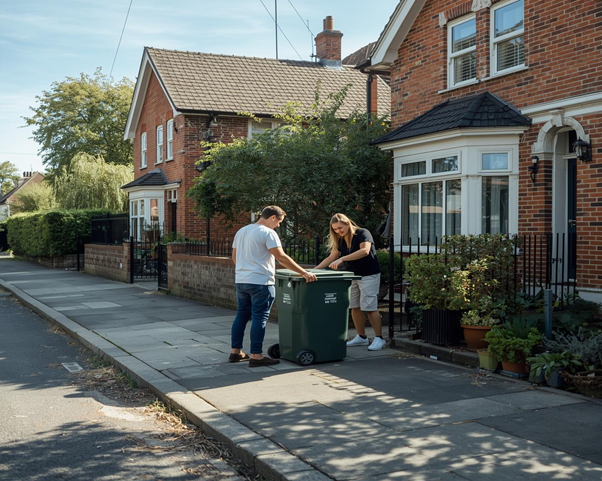How Do I Report Potholes In The Road? Keeping Your Community Safe
Sometimes it feels like no action is taken when you spot a pothole, or that fixing the issues we see is someone else's responsibility. It's easy to think that one report won't make a difference, or that the problem will sort itself out. However, the truth is that prompt pothole reporting helps councils prioritise repairs, allocate budgets wisely, enhance road safety, and reduce vehicle damage. When residents take a few moments to report problems they notice, it genuinely contributes to safer streets for everyone in the community. This article explains how to report potholes in the road and why your actions matter.
Why reporting potholes matters
Every pothole report you make helps councils understand where the problems are and how urgent they are. Councils rely on residents to act as their eyes on the ground, noticing issues that might otherwise go undetected until they become serious hazards. Your report contributes to safer roads for pedestrians, cyclists, and drivers alike.
Prompt reporting also helps councils allocate their limited budgets more effectively. When councils receive accurate information about road conditions, they can prioritise the most dangerous potholes and plan repairs more efficiently. This means that your neighbourhood benefits from better-maintained roads and fewer vehicle damage claims. The cost of repairing a family car after hitting a pothole can be significant, so reporting problems quickly protects both community safety and household budgets.
How to report potholes to your local council
You can easily report potholes to their local council through online forms on the council's website. These forms usually ask for details like the pothole's location and size, helping councils assess how urgent the repair is. Most councils have made the process straightforward, often featuring interactive maps where you can drop a pin to show exactly where the pothole is located.
To report a pothole effectively, make a note of the specific location, including the road name and nearby landmarks or house numbers. Taking a photo can be very helpful, as it gives the council a clear view of the size and severity of the problem.
Using digital tools to report potholes
Digital tools and platforms now make it easier than ever to report road problems, including potholes. Many apps to report potholes offer options to upload photos and share exact locations for faster handling. These tools help residents provide councils with accurate, detailed information that speeds up the repair process.
Some digital reporting tools like the Loci app use smartphone cameras and technology to identify road defects, safely capturing information without requiring interaction while you travel. The more residents use these tools, the more accurate a picture councils receive about which roads need attention most urgently. This data helps councils prioritise repairs and demonstrates the real scale of the pothole problem across communities.
Reporting potholes on major highways
For major highways, reports should be made via national authority websites, such as National Highways in the UK, which manage motorways and major A-roads. These roads are not the responsibility of local councils, so directing your report to the correct authority ensures faster action.
You can contact National Highways by phone or report potholes online through their website. If you're unsure whether a road is managed by your local council or National Highways, many council websites provide tools to help you check.
What happens after you report
Once you've reported a pothole, councils typically inspect it and assess whether it meets their criteria for repair. The size and location of the pothole determine how quickly it gets fixed. Potholes on busy roads or those posing immediate danger are usually prioritised, while smaller defects on quieter streets may take longer to address.
If you provide your email address when reporting, many councils will send you updates about when the pothole is fixed. This feedback loop helps you see the direct impact of your report and encourages continued engagement with keeping your community safe.
Your role in building safer streets
Taking action when you spot a problem on the road demonstrates care for your community. When residents actively report potholes, it creates a culture of shared responsibility for local infrastructure. Everyone benefits from smoother, safer roads, and your contribution helps councils focus their resources where they're needed most.
Looking out for road defects isn't just about avoiding damage to your own vehicle. It's about protecting vulnerable road users like cyclists and pedestrians, who are particularly at risk from potholes. It's also about supporting elderly neighbours and families with young children who rely on well-maintained streets to move around safely.
How Loci simplifies pothole reporting
For those looking for a simpler way to report potholes and stay informed about local infrastructure, the Loci app offers a practical solution. The Loci app simplifies this process by centralising reporting tools, guiding residents to the right agencies, and keeping them informed about repair progress and updates about potholes being fixed in their area. Instead of searching for the correct council website or wondering which authority is responsible for a particular road, Loci connects you directly to the right reporting channels. This saves time and ensures your report reaches the people who can take action.
By using our local community app you can feel confident that you're contributing to safer streets and playing your part in building a well-maintained, connected community. Please contact us to learn more about how the Loci app can help you stay engaged with your local area.
Subscribe by email
You May Also Like
These Related Stories

What Council Tax Bracket Am I in? A Quick Guide For Households

When Is Bin Day? Everything You Should Know

No Comments Yet
Let us know what you think